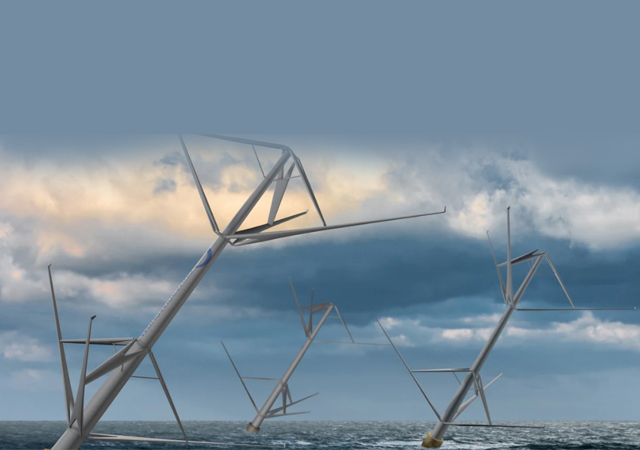

The Norwegian startup World Wide Wind (WW) has introduced counter-rotating vertical axis turbines (CRVT), a new technology specifically designed for offshore floating wind power. According to a recent comparative study by Irish techno-financial analyst Exceedence, this technology can achieve more than 40 per cent improvement on levelized cost of electricity (LCOE) compared to state-of-the-art floating wind turbines.
Using available cost data from existing floating wind projects, as well as data from DNV and NREL a 480 MW floating wind farm at Utsira, Norway was modelled, comparing a steel and concrete spar design 15 MW horizontal axis wind turbine (HAWT) with the 24 MW turbine design from WWW.
The results from the study, using 2024-costs for all input factors were an LCOE of 124 €/MW and 111 €/MW for a HAWT steel and concrete spar design respectively, and 64 €/MW for the WWW turbine.
The design characteristics of the turbine from WWW allows for scaling up significantly beyond 15 MW, which is the biggest size turbine the majority of the industry are designing for today. WWW is targeting to launch a 24 MW turbine in the market before 2030.
Bigger size per turbine means fewer cables and substations. Further, the turbines have fewer moving parts, as well as significantly lower material costs, which all contribute to the cost superiority of WWW’s turbine in the study.
A recent analysis performed by 4Subsea also concluded that the WWW turbine can achieve equal capacity factor to the conventional solutions.
Further, as the WWW turbines have a lower wake effect compared to the HAWT turbines, they can be placed closer together, and hence lead to increased production capacity per area. Wake effects were however not taken into account in the LCOE-study.
HOW WWW CRVT TECHNOLOGY WORKS
WWW counter-rotating vertical axis turbines design employs two coaxial rotors mounted on a vertical shaft. Each rotor has three blades that sweep in an inverted conical area due to its V-shape.
The upper turbine is connected to an inner shaft that serves as the electric generator, while the lower turbine acts as the stator, doubling the relative speed of the shafts and the electrical generating capacity of the system.
The generator is located at the base, next to the ballast and other electrical system components, ensuring stability and resistance to vibration.
According to the company, this design also makes it more resistant to vibration, which affects the integrity of HAWT systems, especially under strong wind conditions.
Also, they claim that WWW turbines have less impact on wildlife due to their low speed and the use of recyclable materials, making them an environmentally friendly alternative.
“To reach the global climate goals, the world needs all the renewable energy it can get, including offshore floating wind. The industry is however facing major challenges in reaching relevant cost levels – much due to the fact that the wind turbines being used are designed for operating on land. The floating offshore wind industry needs disruptive solutions to become more relevant, and our solution unlocks necessary cost reductions along the entire value chain,” says Bjørn Simonsen, CEO of WWW.
